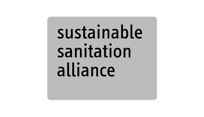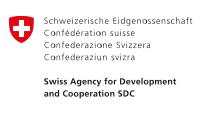Small and medium-sized motorised vehicles are manoeuvrable in narrow roads and dense settlements, fast if road conditions and traffic permit and have significant payloads. As a result, they fill the gap between low-tech transport modes (such as manual C.1 and animal C.2 transport) and more complex, costly and less manoeuvrable large, motorised waste transport C.4.

Various vehicle types exist for small and medium-sized motorised transport; they have different characteristics and a broad range of possible applications. The vehicles include two-wheeled tractors, three-wheeled motorbikes, auto rickshaws, customised pick-up cars and agricultural tractors with or without a trailer. Due to their manoeuvrability, small and medium-sized vehicles can collect waste from household, communal and public storage and are ideal for primary collection. Because of their limited size and lightweight, they can move on roads with limited load capacity and width. Smaller motorised vehicles can travel at higher speeds than manual C.1 and animal transport C.2 if road conditions allow. If larger trucks are unavailable, or if conditions do not allow their usage, small and medium-sized motorised vehicles can also carry out secondary collections, transporting waste over longer distances to processing and treatment facilities.
Design Considerations
Small and medium-sized motorised vehicles must suit local conditions such as accessibility, waste quantities, transport distances and the availability of fuel. Their availability locally must be considered. Vehicles that are commonly available and widely used may be better adapted to local conditions such as the climate and road quality. Furthermore, maintenance and repair services for local vehicle types are more likely than for imported vehicles. If vehicles for waste transportation are not readily available, locally used transport or agricultural vehicles can be customised. Additionally, small and medium-sized vehicles can be adapted with integrated storage compartments, and they can be used to move containers or pull trailers. As with all transport modes, loading and unloading must limit the exposure of operators to waste and be as easy and fast as possible.
Materials
Waste storage compartments must be resistant to the potentially corrosive nature of waste. Especially in bigger or closed compartments, cleaning can be a challenge, increasing the risk of corrosion. Vehicles are likely to be exposed to difficult road conditions; frequent stops during collection routes add to wear and tear. In humanitarian settings, with often limited means for maintenance and repair, the selection of simple, sturdy and long-lasting vehicles and engines is recommended.
Applicability
Small and medium-sized motorised vehicles are ideal for primary collection as they can be used on both narrow and big roads. They can travel relatively fast even on poor-quality narrow roads. Their use in humanitarian settings must be thoroughly assessed as more basic transport types, such as manual C.1 or animal transport C.2, do not consume fuel, might be less costly and require less effort for vehicle maintenance. Particularly if locally available and context-adapted vehicles are used, these vehicles may be applicable during all intervention phases, from acute emergencies to protracted and development contexts. Key conditions for their successful use are the availability of local vehicle repair and maintenance, continuous fuel supply and adequate road conditions.
Operation and Maintenance
Waste collection using small and medium-sized vehicles requires detailed route planning to ensure that vehicles are productive and to justify higher operational costs from fuel consumption and vehicle maintenance. The planning of routes should aim to avoid potential traffic jams and ensure that all service recipients are served as needed based on their waste generation. Maintenance, repair and fuel availability must be ensured at all times. Drivers should be well-informed about collection and transport routes and trained on safe and low-wear driving. During trips, drivers must be able to carry out minor technical troubleshooting in case of engine or vehicle failure.
Health and Safety
Waste loss during journeys must be prevented with, for example, closable transport compartments, tarpaulins or nets, especially on longer trips at higher speeds. For longer journeys, crew accommodation on vehicles should be considered. Riding on waste must be avoided. The loading height must not be above the workers’ shoulder height and vehicle payloads must not be exceeded. The reversing of vehicles must be avoided whenever possible or assisted by waste operators. Operators are required to wear personal protective equipment and be trained in correct waste handling and other occupational health and safety measures X.4.
Costs
The cost of small and medium-sized motorised transport greatly depends on the vehicle selected. Selecting locally available, context-adapted and sturdy vehicles minimises costs. Capital costs include the initial investment and the replacement costs once the equipment or entire vehicle reaches its end-of-life. The capital costs of small and medium-sized motorised vehicles might be much lower than large trucks but are still significantly higher than manual or animal transport. Operational costs include the salaries of drivers and operators, vehicle maintenance and repair and fuel. Operational costs for smaller vehicles can be reduced if the waste collection interface with storage, transfer or disposal sites is efficient and vehicle productivity is high.
Social Considerations
Communities need to be well-informed about collection times, especially for the collection of waste from households. Motorised transport requires skilled drivers, who might be in short supply or difficult to recruit if they are unfamiliar with the selected vehicles.
Key Decision Criteria
Input Products
Organic Waste
Organic Garden/Wood Waste
Organic Food/Kitchen Waste
Recyclables
Plastics
Paper and Cardboard
Metals
Glass
Textile
Mixed Waste
Residual Waste
Output Products
Organic Waste
Organic Garden/Wood Waste
Organic Food/Kitchen Waste
Recyclables
Plastics
Paper and Cardboard
Metals
Glass
Textile
Mixed Waste
Residual Waste
Response Phase
Application Level
Management Level
Space Required
low
Technical Complexity
medium
Objectives & Key Features
Manoeuvrable and fast waste collection and waste transport over medium/longer distances
Strength & Weakness
- High manoeuvrability in narrow roads and dense settlements
- Similar payloads but able to travel faster and, potentially, further than manual or animal transport
- Higher costs compared to non-motorised transport
- Increased need for vehicle maintenance compared to non-motorised transport
- Fuel consumption
Selected References
Key design features of the selection of small- and medium-sized motorized vehicles
UNEP (2005): Solid Waste Management, United Nations Environment Programme, Kenya






